Rain Gardens are sprouting up all over Princeton, and we recently had the opportunity to interview Maureen about her beautiful rain garden filled with native plants.
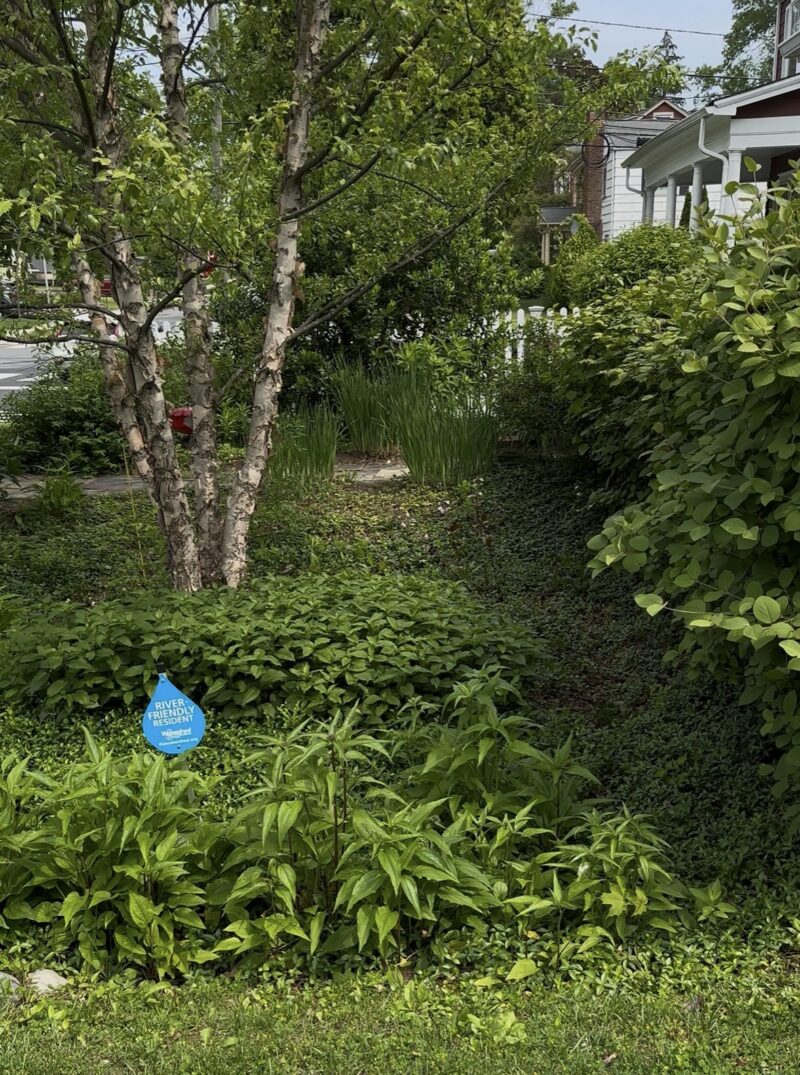
What are rain gardens?
Rain Gardens, or bioretention cells, are a popular and small-scale green infrastructure strategy that can be implemented on different scales. The sunken planting areas capture, filter, and infiltrate the stormwater runoff, which can be in your backyard or worked into streetscapes. They are one of the easiest and most aesthetic ways to deal with heavy rainfall and stormwater. Learn more about rain gardens and other green infrastructure in our explainer.
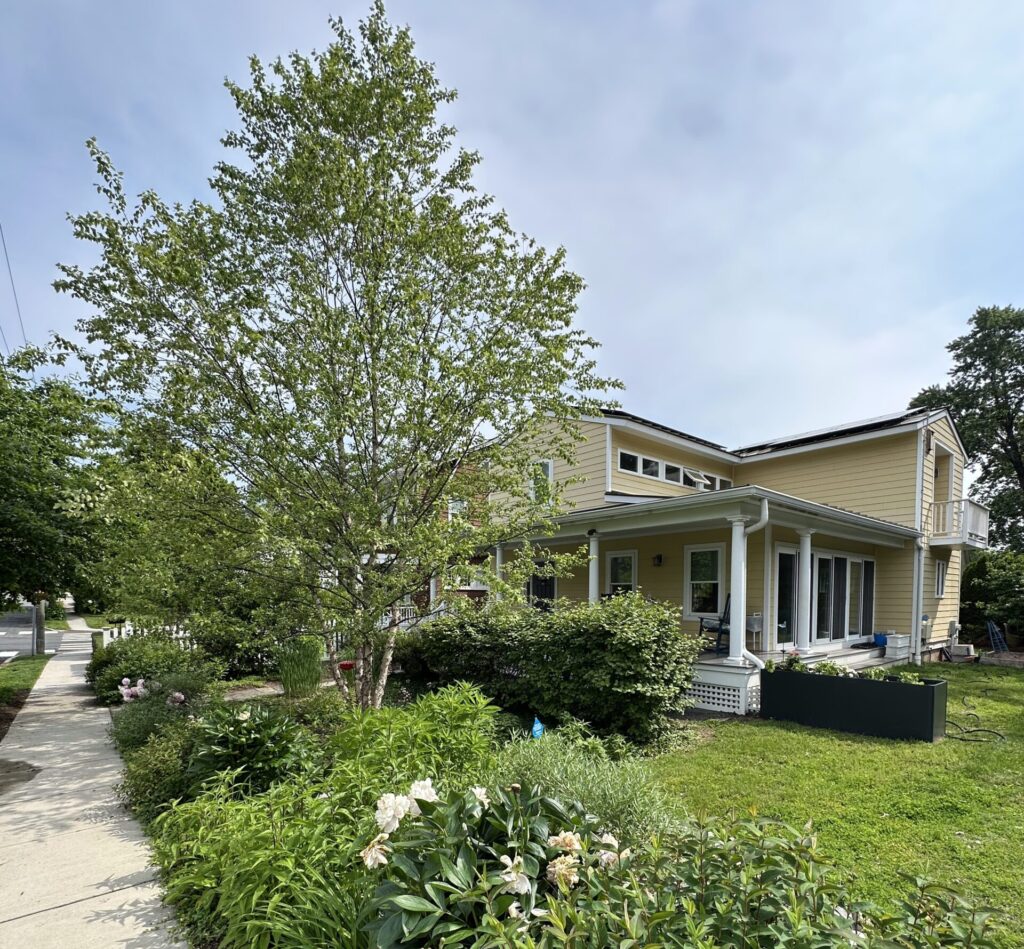
The O.G. Home
Maureen’s home was originally right next door to the one that now features the rain garden. Completed in 2015, Maureen says her home was a precursor to the town’s ADU ordinance, with the new home attached rather than standalone. Sustainable Princeton featured this home as the O.G. Home (Original Green Home) in our 2024 Green House Tours.
The rain garden and grading were all done while the home was under construction. Kiefer Landscaping, LLC, designed and installed the rain garden. Before David Cohen had to recuse himself from professional architecture projects in Princeton, he was the architect and expert on stormwater management with a living rain garden. The house has been built to LEED standard, and David Cohen also designed the porch roof to structurally hold an extensive live roof garden, which Maureen hopes to complete one day.
Garden beginnings
Once the house was finished, Maureen started gardening in 2016. She extended the side yard with perennials and added plants to attract butterflies. Native plants and trees in her rain garden and yard include:
- Heuchera villosa, Hairy alumroot
- Betula nigra, Riverbirch
- Echinacea, Coneflower
- Chelone, Turturtleheads
- Viburnum nudum, Possumhaw
- Iris versicolor, Blue Flag Iris
- Hypericum perforatum, St. John’s wort
- Eutrochium purpureum, Joe-Pye Weed
Joe-Pye Weed is a volunteer plant she encouraged to grow. Volunteer plants are seedlings that appear without being intentionally planted, often from seeds dropped by previous crops or carried by animals. She started pawpaws in pots and has had harvests from them.
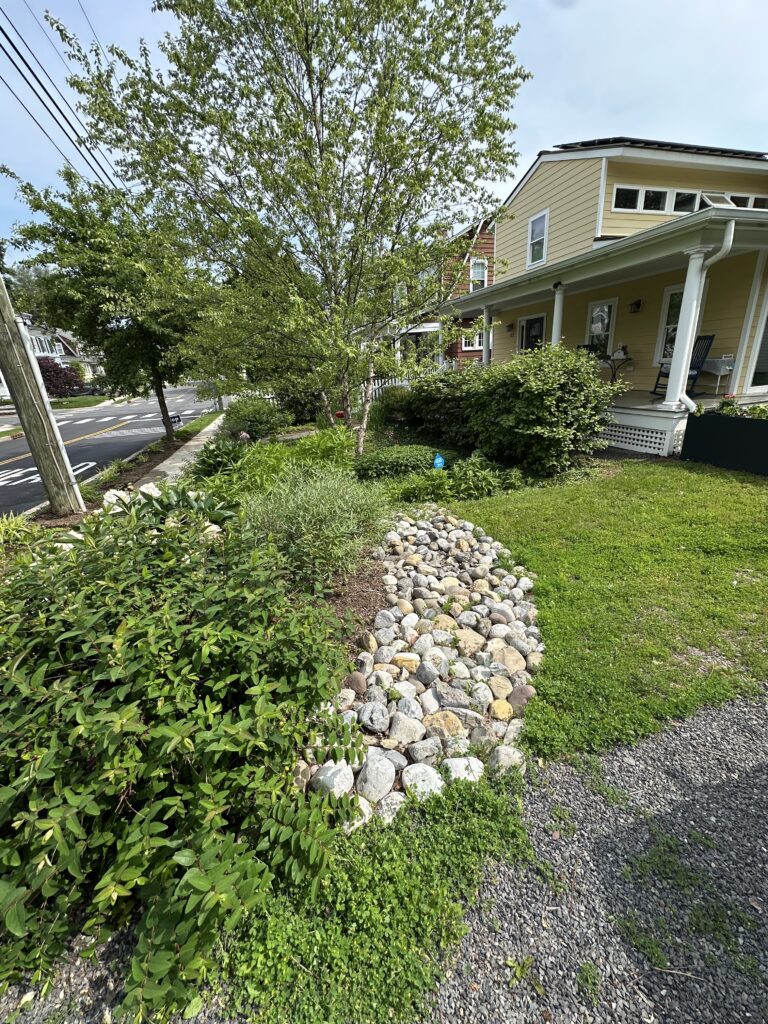
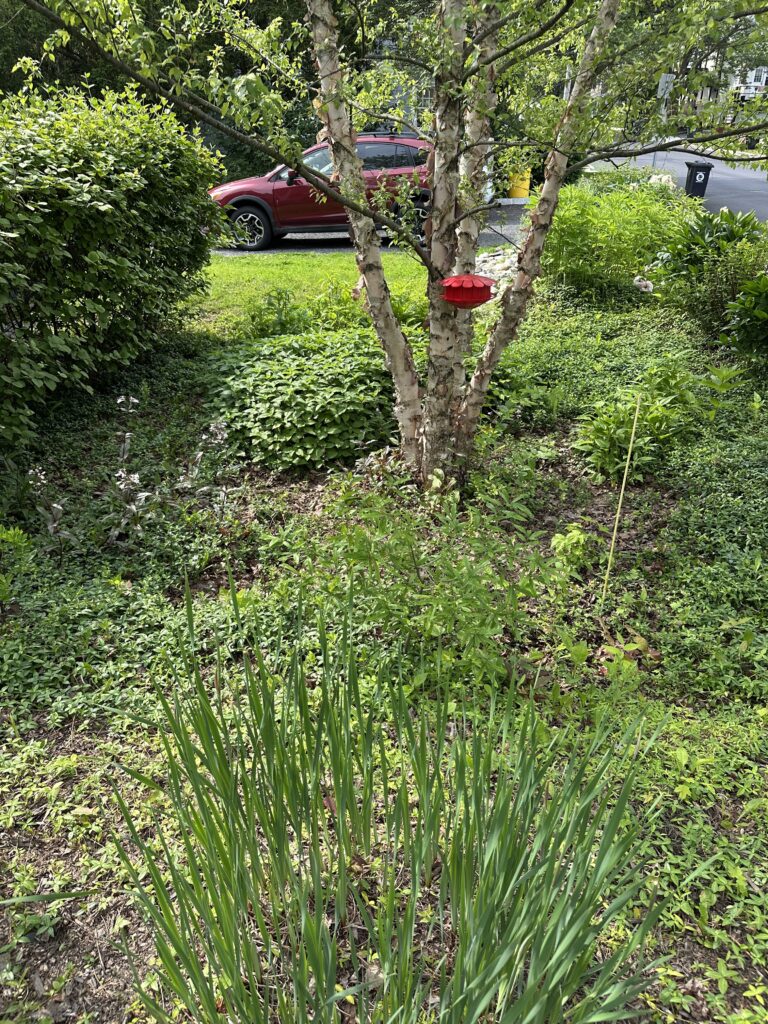
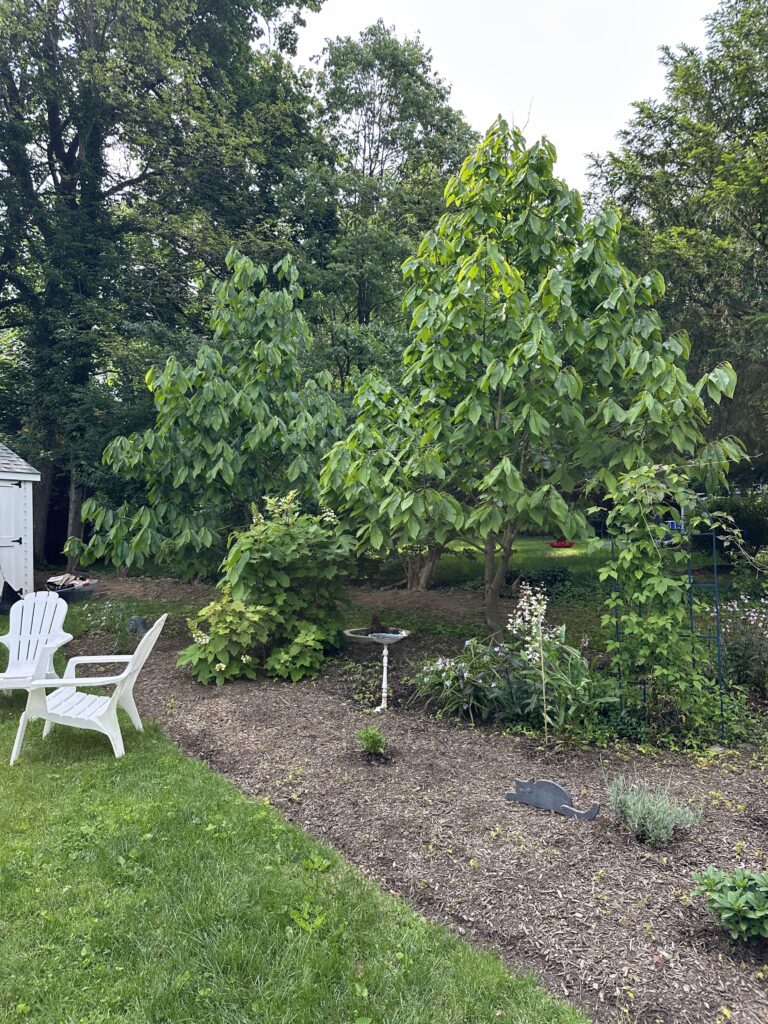
Maureen selects plants specifically for pollinators, looking for specific colors that will work best in her yard’s climate. She said about 99% of her plants are native to New Jersey. She also has a raised bed garden for vegetables. She recommends shopping local nurseries, such as Bountiful Gardens, located in Ewing, as well as Ace Hardware for topsoil. Maureen works with J & A Landscaping for landscape upkeep assistance in the winter and spring. She asks her landscaper to blow leaves into the rain garden rather than dispose of them.
In addition to her native plants, Maureen manages a compost pile and uses an electric mower to maintain the remaining grass. Maureen’s yard is certified as a River-Friendly with the Watershed Institute and her yard meets the qualifications of National Wildlife Federation’s Certified Wildlife Habitat certification.
Her advice to those looking to get started: “Check your tolerance for a messy garden. If you want things in a [tidy] row, it’s harder to do with natives.” Maureen adds, “A green lawn is not important. Reduce your chemical usage and cultivate clover where grass doesn’t grow”.
Maureen encourages everyone to “get out in the garden and enjoy it!”
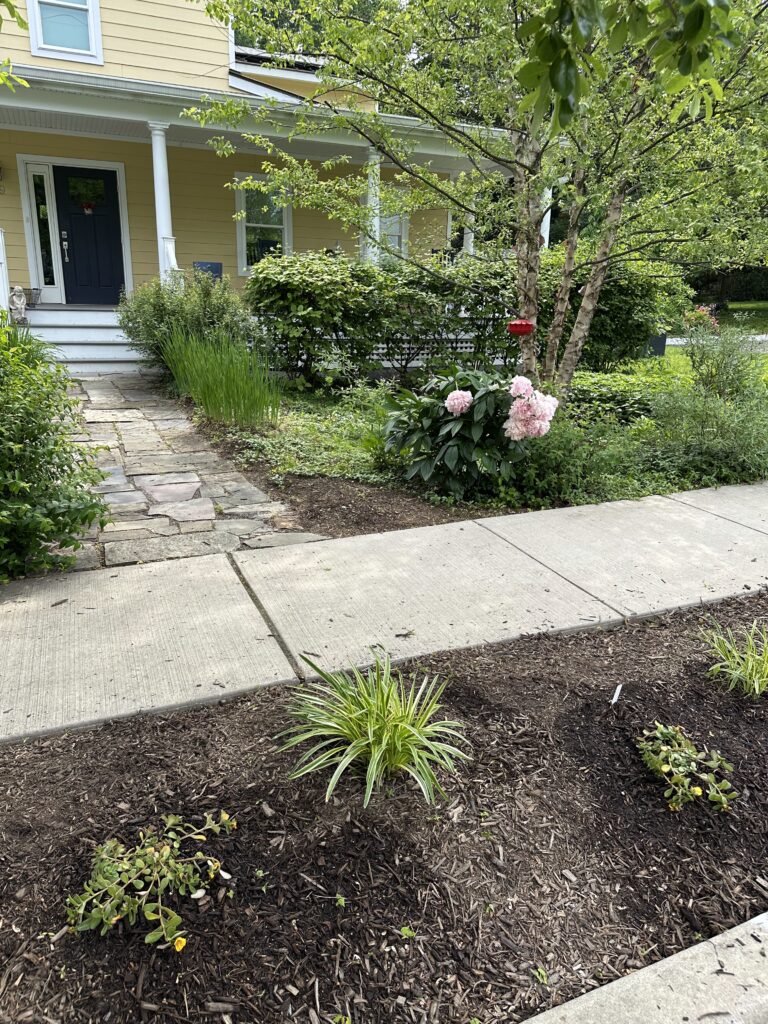
Learn more about native plants and sustainable landscaping on our website.
Do you incorporate sustainable landscaping practices into your garden? Whether large or small, we’d love to feature you! Reach out to us at info@sustainableprinceton.org
